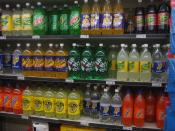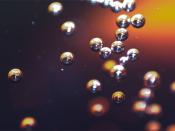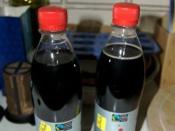The stimulant properties and dependence potential of caffeine in soda are well documented, as are their effects on children.
Ever tried going without your usual cup of java on the weekend? If so, you may have experienced a splitting headache, a slight rise in blood pressure, irritability and maybe even some stomach problems.
These well-documented symptoms describe the typical withdrawal process suffered by about half of regular caffeine consumers who go without their usual dose.
The soft drink industry agrees that caffeine causes the same effects in children as adults, but officials also note that there is wide variation in how people respond to caffeine. The simple solution, the industry says, is to choose a soda pop that is caffeine-free. All big soda makers offer products with either low or no caffeine.
That may be a good idea, though it raises the question of whether soda machines in schools should be permitted to offer caffeinated beverages or at least be obligated to offer a significant proportion of caffeine-free products.
It also raises the question of how one determines a product's caffeine content. Nutrition labels are not required to divulge that information. If a beverage contains caffeine, it must be included in the ingredient list, but there's no way to tell how much a beverage has, and there's little logic or predictability to the way caffeine is deployed throughout a product line.
Okay, so most enlightened consumers already know that colas contain a fair amount of caffeine. It turns out to be 35 to 38 milligrams per 12-ounce can, or roughly 28 percent of the amount found in an 8-ounce cup of coffee. But few know that diet colas -- usually chosen by those who are trying to dodge calories and/or sugar -- often pack a lot more caffeine.
A 12-ounce...


